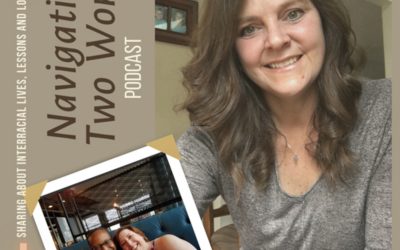“For who you are, and for who I am when I am with you”.
These are the words on the matchbook cover that my husband and I gave as favors at our wedding thirty years ago. I know, matches, right? That was a very trendy move back then – almost as trendy as putting a quote like this on the napkins used at cocktail hour!
The reality is that this quote speaks to how we truly felt when we got married. We made each other better. We brought the best out in one another. We looked for the best in one another. And, we knew we were stronger together.
Thirty years – can you believe it? That’s a long time to sustain any relationship, and we are proud and honored that we have been blessed with a marriage with this longevity. When we got married we were an interracial couple facing the world of uncertainty and lacking acceptance – together. And, for us, this thought of being better with and for each other is still the truth today.
Over the past few years, though, I have begun to understand this in a deeper, more impactful way. I learned that when I am with Kevin, I am only better if I truly see him. While he is the man that I love and the father of our children, he is also a Black man. His culture has a history that is rich, deep and complex. His life has been very different from mine and his lived experiences are ones that I will never be able to replicate in my life.
When we met, I certainly realized the color of his skin. At that time, we were hearing how important it was to “not see color” and that all people are the same. So, that’s how I entered our marriage – not seeing his skin color, and trying not to notice the same skin color in his family. I wanted to treat him and his family the same as I treated my family. That never felt quite right to me, but to be sure that I was not projecting any kind of racial bias, I went with it.
We had children, and they are a beautiful blend of Kevin and I. And guess what? Yep – I stuck to my approach and didn’t see their color either. I helped raise them as simply “children”, not children of color and all that encompasses. When people asked me about them, I quickly answered that they were my children, that my husband was a man (not a Black man) and I moved on.
Lessons Learned:
Fast forward twenty-eight years later. As I began to reflect on our family and learn from the racially motivated events that heightened our country’s awareness of inequity, I realized that this approach was no longer valid. As a matter of fact, it never was valid.
In the book, Be the Bridge, Latasha Morrison reminds us that, “in the love of the family of God, we must become color brave, color caring, color honoring, and not color blind We have to recognize the image of God in one another. We have to love despite, and even because of, our differences.”
Isn’t that exactly what our matchbook quote is telling us?
The joy and strength of knowing and seeing our partner, spouse, friend or family member for who they truly are, then standing confident in how much better we are when we are with them in that greatness.


